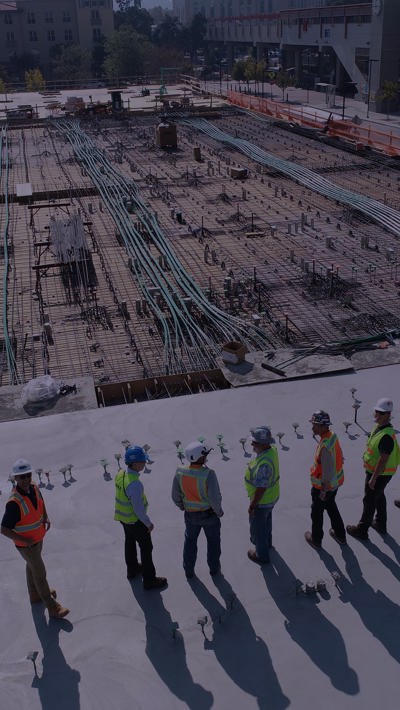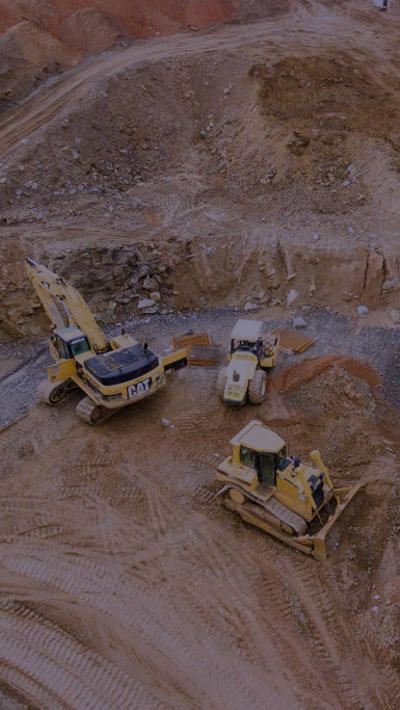Contents
Big Build is our quarterly publication tracking legislative and regulatory reform and other developments affecting the construction and infrastructure sector.
Some of the key highlights we touch on in this publication include the protocols developed by the Construction Sector Accord to assist employers to make “sound legal decisions” regarding workplace vaccination policies, the report back of the Retentions Bill, and the Building Code Update. We also look at the proposal to rewrite the Waste Minimisation Act, the 30 year infrastructure strategy being developed by the NZ Infrastructure Commission, the review of local government, and the Productivity Commission inquiry into a working age immigration policy.
Contents
Construction
Infrastructure
Construction specific Vaccination Risk Assessment Tool
The Construction Sector Accord has developed construction specific protocols to sit beside the generic Vaccination Risk Assessment Tool (see link below).
The protocols are intended to assist employers to make “sound legal decisions” on when they can require workers to be vaccinated. They are in the form of decision trees and cover whether:
- specific role(s) or classes of roles should be fully vaccinated
- a business or business unit should be fully vaccinated, and
- a specific worksite site should only be accessed by fully vaccinated people.
The industry had wanted to be included in a Government Vaccination Order in recognition of the high risks identified with multiple contractors working on sites and shifting from site to site, but this was rejected.
To learn more, see the tool and announcement.
Retentions Bill on home straight
The Construction Contracts (Retention Money) Amendment Bill is now on the home straight. It has been reported back by the select committee with a number of proposed amendments, all of which have the committee’s unanimous support.
Most of the changes are in the nature of clarifications which, we consider will improve the Bill and make for a stronger retentions regime.
Key changes
An amount will become retention money for the purposes of the legislation when a construction contract allows Party A to withhold payment of an amount from Party B. This will apply whether or not:
- the money had been set aside
- the amount had been calculated
- a record of the amount had been prepared or supplied to Party B, and
- Party B had been paid the amount owed.
It will not become retention money if Party A chooses not to retain the amount or if the amount falls below a certain threshold set by regulation.
Party A must give written notice of 10 working days before using retention money to remedy defects so that Party B has the option of doing the remedial work themselves or disputing Party A’s claim.
Retention money does not need to be held in a statutory trust account. But the bank needs to be informed that the money in the relevant account is held on trust under the Act and is trust money. This will prevent it becoming subject to a banker’s lien or other set-off rights.
Where retention money is kept in third party accounts those accounts must be held by legal practitioners, accountants, or statutory trustee companies.
Where retention monies for numerous parties are held in the same account and the amount is insufficient for all and it is unclear which party B should receive the money, the Bill will now make it clear that any payments should be apportioned between the party Bs in accordance with their balances in the ledger record.
Read the Bill here.
Commerce Commission to investigate residential building supplies market
The Commerce Commission is to investigate the competitiveness of the market for key residential building supplies – including foundation, flooring, roof, wall and insulation products. Its final report is due in December 2022.
See the statement here.
Green Star rating of five required most large government builds
As part of its emissions reduction strategy, the Government will require new non-residential government buildings with a capital value over $25m to meet a minimum level five Green Star rating from 1 April. From 1 April 2023, the $25m threshold will drop to $9m.
Read the statement.
Legislation rewrite in prospect for waste industry
Environment Minister David Parker has begun a consultation to replace the overarching Waste Strategy and the Waste Minimisation Act 2008 and Litter Act 1979 with new legislation.
The new law is likely to include:
- a duty of care model, as already adopted by a number of like jurisdictions
- a national licensing system for the waste industry
- stronger regulatory tools
- more support for product stewardship schemes, and
- provisions to establish deposit return schemes.
The new Waste Strategy will set the direction for the next 30 years, with a focus on moving New Zealand to a low-waste, more circular economy, including specific reduction targets by 2030 for total waste, methane emissions from waste, and litter.
Parker suggested there was significant room for improvement as New Zealand has one of the highest waste generation per capita levels in the world, and much of the stuff going to landfill could be recycled, reprocessed or reused.
Submissions closed on 26 November.
View the consultation document.
Joint Labour-National initiative to break housing impasse
The Resource Management (Enabling Housing Supply and Other Matters) Amendment was passed before Christmas and will come into effect on 1 August 2022. The Bill arose from a joint Labour-National initiative and all parties in the House voted for it except ACT.
It will allow three house, three storey developments on most sites in our five largest cities without a resource consent. District plans typically allow only one house to two storeys to be built before a consent is needed.
The change has been achieved by bringing forward implementation of the National Policy Statement on Urban Development (NPS-UD) in Auckland, Hamilton, Tauranga, Wellington and Christchurch and by short order amendments to the Resource Management Act (RMA).
Exemptions will be allowed where intensification is inappropriate – e.g. where a site has a high natural hazard risk or heritage value. The Bill was softened in response to submissions, and to broader public criticism, to provide greater space and sunlight protections to existing properties.
Seismic assessment rules
An investigation by Engineering New Zealand for the Ministry of Business, Innovation and Employment (MBIE) has found that the existence of two guidelines – the ‘Red Book’ and the ‘Yellow Chapter’ – for assessing the seismic integrity of buildings creates unnecessary confusion and market uncertainty.
Both were released by MBIE. The Red Book in 2017 and the Yellow Chapter, which incorporates new knowledge around the impacts of earthquakes on building behaviour, in 2018. But the law requires that the Red Book be used for evaluations under the Earthquake-Prone Building (EPB) legislative regime.
The inquiry was conducted over two phases and involved 18 buildings. It found the two approaches delivered different results in terms of % New Building Standard (%NBS) with the Yellow Chapter pushing two buildings under the 34% NBS threshold, and moving three buildings out of earthquake prone status.
The report said engineers had engaged strongly with the process, wanted one guideline to use both for optimal assessment and regulatory purposes, and found the Yellow Chapter technically superior and more straightforward to use.
View the report.
Chasing “broader outcomes” in procurement
The Construction Sector Accord has developed procurement guidelines to encourage buyers and suppliers to promote broader outcomes through projects which might deliver social, environmental, cultural or economic benefits with long-term public value for New Zealand.
The announcement offers as a case study the decision taken by Whangarei District Council and its construction partner Canam to use the Council’s $48m Civic Centre project to promote community objectives, including the use of local companies and training opportunities for the region’s workforce.
As a result of this approach, 200 jobs were created of which 80% were local, 25% involved trainees and apprentices, and 20% on-site went to women.
See the statement here, including the Beacon’s case study.
Suicide rate high in construction sector
Research by Otago University for MATES in Construction NZ shows that construction workers have twice the suicide rate of the rest of the workforce.
Of 5,814 suicides recorded in New Zealand between 2007 and 2019, 583 were from the construction sector. The age group most at risk was 20-24 year olds, followed by 45-49 year olds. The rate for Māori was 21.3% against 16% for the rest of the Māori population.
MATES CEO, Victoria McArthur said the findings showed it was more important than ever to increase the focus on mental health – especially as “this isn’t a group that is likely to proactively seek help or reach out to offer it”.
See the MATES website executive summary.
Building cap on EQC cover to double
The Government will increase the cap the Earthquake Commission (EQC) will pay on residential properties from $150,000 per dwelling to $300,000 on 1 October. Announcing the change, the Minister Responsible for EQC, David Clark, said it would help keep private insurance cover available and affordable for most homes across New Zealand.
View the article here.
Price of consent high in NZ
A study by Sapere Research Group for the New Zealand Infrastructure Commission – Te Waihanga (the Infrastructure Commission) has found that the costs of consenting infrastructure construction in New Zealand are high by international comparison and have been rising steeply in recent years.
The findings, based on a survey of 186 projects, include:
- an increase in annual consenting costs of $500m since 2014
- costs as a proportion of project value were higher for projects under $200,000 at 16% compared to 10% for larger projects, and
- equivalent figures for the US were 3% to 5% and 5% to 10% for Australia.
To learn more, see the Sapere report.
30 year infrastructure strategy with Robertson for comment
The Infrastructure Commission is in the process of developing a 30 year infrastructure strategy, as required by its establishment legislation.
Commission CEO Ross Copland conveyed the size of the task in his introduction to the draft plan, saying New Zealand was on track to gain another 1.2m people within the next 30 years, had a 75% chance of a catastrophic earthquake on the Southern Fault in the next 50 years, and was saddled with an accumulated infrastructure deficit in excess of $75b.
The Commission has developed five strategic objectives in its “blueprint for action”:
- enabling a net-zero carbon Aotearoa through greater development of clean energy and reducing the carbon emissions from infrastructure
- supporting towns and regions to flourish through better physical and digital connectivity and freight and supply chains
- building attractive and inclusive cities that respond to population growth, unaffordable housing and traffic congestion through better long term planning, pricing and good public transport
- strengthening resilience to shocks and stresses by taking a coordinated and planned approach to risks based on good quality information, and
- moving to a circular economy by setting a national direction for waste, managing pressure on landfills and waste recovery infrastructure and developing waste-to-energy options.
View the draft plan.
Government imposes Three Waters reforms
As it became evident that the “opt in with inducements” policy was not going to deliver the goods, the Government bared the iron fist, announcing on 27 October that it will legislate to create four publicly owned entities to manage the country’s three waters delivery and infrastructure.
Local Government Minister Nanaia Mahuta said the case for change was “too compelling to ignore”. Opponents maintain the transfer of the water assets and accompanying revenue streams from 67 local authorities into the new structure is a confiscation – or even a theft.
Mahuta acknowledged the depth of opposition by appointing a Working Group on Representation, Governance and Accountability to develop solutions to the “sticking points” raised by critics of the plan and, just before Christmas, brought out a draft exposure bill to assist the Group’s work. It is to report to the Government with recommendations by 28 February.
Current plans are that the Bill, as amended, will be introduced to the House in the first half of this year with the opportunity for public submissions through the normal legislative process.
The Group is chaired by Doug Martin and comprises nine elected local authority members, including the Mayors of Auckland and Christchurch, nine representatives of iwi and Māori and the chair of the joint Central-Local Government Three Waters Steering Committee, Brian Hanna.
Local Government New Zealand (LGNZ) had entered a Heads of Agreement (HoA) with the Government on how they would partner to achieve the Three Waters Reform objectives.
The HoA was signed on 13 July and stated that LGNZ might “publicly express its disappointment” if the Government considered compulsion necessary but would not actively oppose the move.
This was on top of the $761m allocated in Budget 2020, and the $296m provided in Budget 2021.
The HoA did not, however, bind individual councils and did not prevent Timaru District Council (which has voted to quit LGNZ), Whangarei and Waimakariri from filing proceedings in the Wellington High Court in November seeking “full and fair” compensation for the loss of their water assets. The case has yet to be heard.
Several councils are also working together to develop an alternative reform approach. So far 21 have joined, including Christchurch City Council, Napier City Council, Ashburton and Hurunui.
To learn more see the draft Water Services Entities Bill, Mahuta's announcement of decision to legislate, Mahuta's statement on Working Group, and the HoA.
Economic regulation of Three Waters
Commerce and Consumer Affairs Minister David Clark is developing regulatory safeguards to ensure that consumer interests are protected under the new Three Waters regime and that the estimated $185b infrastructure investment required over the next 30 years is delivered in a way that is efficient, affordable and resilient.
Specific proposals include:
- whether economic regulation should apply to all three waters, or just drinking water and waste water, and which suppliers should be covered
- what form of economic regulation should apply, such as information disclosure and price-quality regulation, and how this should be designed
- whether additional consumer protections are needed, e.g. whether there should be minimum service level requirements
- how to give consumers a strong voice and resolve consumer disputes, and
- who the economic regulation and consumer protection regulator(s) should be, and how the regimes should be funded.
Submissions closed on 20 December.
See Clark's statement.
Waka Kotahi to reduce carbon footprint
Waka Kotahi NZ Transport Agency will test drive a new procurement approach to reduce its carbon footprint on the Penlink project and plans to apply it on all future projects worth more than $100m, with a view to cutting its construction emissions by at least 10%.
Other initiatives will include:
- assessing bids on the emissions profile of the supplier’s construction methods
- introducing new sustainable infrastructure and resource efficiency policies
- applying the sustainability rating tool developed by the Infrastructure Sustainability Council, and
- exploring changes to projects still in development that could lower emissions while still providing the outcomes promised to communities – e.g., through optimisation of plant, fuel use, earthworks and using materials closer to project sites.
View Waka Kotahi’s statement.
Emissions Reduction Plan a long way to go
The consultation document to “shape” New Zealand’s first Emissions Reduction Plan shows the Government will need every day of the five month extension it has granted itself to deliver on the Climate Change Commission’s advice, and achieve the net zero emissions targets.
There is a significant gap between the Government’s policy package and the emissions reductions that are required. James Shaw acknowledges the gap but says that is why public feedback is so important – especially as government policy cannot by itself do the job. Commitments and proposals from the private sector will also be required.
Submissions closed on 24 November.
Read our commentary here.
Report provides ‘how to’ guide for leaving natural gas on good terms
The NZ Gas Infrastructure Future Working Group, comprising the large gas infrastructure companies with observers from the Gas Industry Company, MBIE, the Commerce Commission, the Electricity Authority and the Major Gas Users’ Group, has provided a 98-page report on how the economy can exit from natural gas without creating unnecessary expense and disruption to consumers or the market.
The Group is responding to the fact that the Climate Change Commission recommended that the Government phase out natural gas without providing any advice on how this might be achieved and, in particular, what it might mean for existing infrastructure.
Of the two possible options – wind down or repurpose to net zero carbon gases – the Group strongly supports repurposing as the most constructive and least destructive approach.
It recommends that the Government and the Commerce Commission take the next 12 months to consider how this might best be done, including the regulatory framework that would be required and initiatives to accelerate development of the hydrogen and biogas industries.
To learn more, see the report here.
Auckland light rail options
The team appointed by the Government and Auckland Council to develop light rail options from Auckland airport to the CBD have come up with three recommendations:
- a Melbourne style modern tram
- a London style underground metro, and
- a tram underground from Wynyard Quarter to Mt Roskill and street level to the airport, which is the team’s majority choice with a price tag above $14b.
Detailed planning and design work is expected to start early this year. Key considerations will include: disruption to business, value for money, alignment with the broader public transport network, and the ability to open up housing along the corridor in Mt Roskill, Onehunga and Mangere.
The Cabinet decided its preferred option at the end of last year and an announcement is expected soon, although it is unclear whether this will include funding arrangements.
To find out more, read the statement and independent report.
Four ideas to “get Wellington moving”
Four options to reduce reliance on the car, lower emissions, and promote new residential development have been released for public consultation by Let’s Get Wellington Moving (LGWM).
All involve a new tunnel under Mt Victoria. Three feature a tramline from the Railway Station to Island Bay, while the fourth would rely instead on elongated electric buses.
Submissions were due by 10 December. LGWM will deliver its response early this year and come back with a more detailed proposal.
View the LGWM website.
Local government review interim report
Either the local government review panel is keeping its powder dry, or its thinking is still at the very preliminary stages, judging by the interim report, released in September.
Either interpretation is possible – various reform attempts in the past have demonstrated that parochialism, once roused, can be the enemy of change, and there is no need for haste as the panel has until 30 September 2022 to come up with draft recommendations and until April 2023 to complete its work.
The panel has a good mix of skills and experience. It is chaired by former Waimakariri District Council CEO Jim Palmer and comprises: Penny Hulse (former deputy Mayor of Auckland), Gael Surgenor (Director Community and Social Innovation for The Southern Initiative) Antoine Coffin (Principal of Boffa Miskell and an RMA Hearing Commissioner), and Brendan Boyle (former Chief Executive of the Ministry for Social Development).
And the review is well-timed as the Three Waters Programme, the climate change response, and squeezing more than 100 planning documents into 14 will all have huge impacts on local councils.
But, if this was a reading the tea leaves exercise, we would be looking at an almost clean cup. Perhaps most telling in terms of where the review might head is the identification of the “priority questions”, and in particular the following:
- how a system of local governance might embody authentic partnership under Te Tiriti o Waitangi
- what needs to change so that local government and its leaders can best reflect and respond to the communities they serve, and
- how local governance funding and financing can be structured to ensure viability and sustainability, fairness and equity, and maximum wellbeing.
Local government expenditure currently represents about 4.8% of GDP and rates income represents about 2.6%, suggesting there may be scope for some rebalancing.
To learn more, see the interim report.
Productivity Commission on a working age immigration policy
The Productivity Commission has put out its preliminary findings and recommendations on how working age immigration settings can best contribute to New Zealand’s long-run economic growth and the wellbeing of New Zealanders.
Submissions were due by 24 December. The final report is due by 30 April 2022.
The Commission finds that the current system is “highly adaptive” and able to respond promptly to emerging labour market needs.
But policies do not consider the wider impacts on the economy in any obvious or transparent way, and decisions regarding the number of residence visas that will be issued each year “no longer bear any relationship to population growth rates or the economy’s ability to absorb new entrants”.
These gaps have allowed migration flows to grow ahead of public infrastructure and have allowed the education and training establishment to become less responsive to generating the skills New Zealand businesses need.
The infrastructure supplied by the private sector (e.g. telecommunications, energy and airports) has generally kept up with demand, with the obvious exception of housing. But large deficits have emerged in public sector provision as successive governments have focused on deficit and debt reduction. The cost of removing these, while also providing enough infrastructure to service current housing needs and to ease congestion, is estimated at 0.7% of GDP each year for the next 30 years.
The Commission’s principal recommendation is that the Immigration Act be amended to require the Government to give explicit consideration to the country’s ability to accommodate and settle new arrivals when determining the national interest in immigration.
Its proposed mechanism for achieving this would be to require a regular Government Policy Statement (GPS), as now applied to transport. This could be used to calibrate immigration targets to immediate and developing needs. Examples the Commission offers are:
- targeting health workers to meet the demands posed by an ageing population
- targeting construction workers to rebuild after a natural disaster, such as the Canterbury earthquakes, and
- deepening the innovation ecosystem by refining investor and entrepreneur visa categories to attract “smart capital”, prioritising post-study work rights and residence pathways to graduates with skills required by New Zealand’s frontier firms, and facilitating easy entry for advanced research academics and high calibre managers and directors.
View the draft report.
Speak to our experts
We hope you find our insights within this publication useful. Please get in touch with one of our experts if you would like to discuss any topic in more detail. We offer market-leading expertise and a seamless service for all your project needs – from financing, planning and consent through to all stages and facets of the construction process.
 Hamish Bolland, Partner
Hamish Bolland, Partner
 Greg Wise, Partner
Greg Wise, Partner
 Fiona Bennett, Partner
Fiona Bennett, Partner
















































































